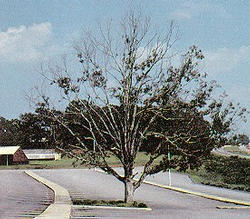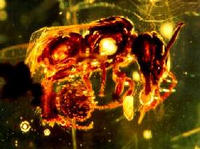 From Mikel Maron's Brain Off blog: From Mikel Maron's Brain Off blog:"Contrary to expectations, urban landscapes are some of the most interesting ecologies. The variety of landscapes and microclimates (roads, parks, gardens, rail, canals, industries), the intense flow of exotic materials for commerce and gardening, and continual disturbance, all contribute towards many opportunities for nature. Due to such variety, cities are often more biologically diverse than the surrounding countryside. Nature is astoundingly creative, and keen to exploit subtle convoluted chance.
Nature continues to happen, in more astounding forms, even within our most artificial environments. Some bizarre relations of humans and nature from The Ecology of Urban Habitats- The overall result is that urbanized areas, despite a large reduction in the total vegetation cover, support a higher number of species than the surrounding countryside. [p. 11]
- .. tropical fauna and flora occurs in certain canals where water used to cool machinery is discharged. Thermal pollution of the River Don by the steel industry has enabled wild figs to colonize its banks, [p. 118]
- In fact all industry, as it gets tidied up, becomes less interesting for wildlife. The very features that allow a rich flora and fuana to survive - the squalor, rubbish, old buildings and machinery, derelict huts, rotting dumps, ineffiecient handling - are becoming unacceptable to management [p. 122]
- [Oxford ragwort] A native of Southern Italy, was cultivated in the Oxford Botanical Garden for over a hundred years before it eventually escaped (1794) and soon reported as plentiful on almost every wall in the town. About 1879 it reached the Great Western Railway system where the plumed seed engaged in a new form of dispersal, being carried along in the vortex of air behind express trains, or even inside them [p. 139]
- the reasons for caraway being limited to railway verges in Scotland ... caraway cake topped with fresh seeds was pocketed at post-funeral teas ... on the way home they tried to eat it, gave up and threw it out of the window [p. 142]
- A more subtle effect of dogs can be observed on the base of street trees against which they urinate. This area, known as the canine zone, carries a different epiphytic flora to the rest of the trunk. [p. 162]
- Starlings were successfully introduced into New York in 1890-91 as part of a project to establish in the States all the plants and animals mentioned by Shakespeare. [p. 171]
- .. [an] experiment took place in Germany during the Third Reich when exotics [foreign plants] became enemies of the state and for a short time naturalistic planting flourished ... [p. 184]"
Interesting. In urban areas there's greater diversity than in industrialized farm land, so nature has the opportunity for thriving better in many ways. Urban landscapes are aggregates of many individual choices, many small bets on different things. Varied constellations of new things being built, combined with old things decaying. Farm land is homogenized monopolistic monoculture. Maybe the worst crime against nature is not cities, but modern farming methods?
[ Culture | 2003-02-08 20:04 | | PermaLink ] More >
|
 From Mikel Maron's Brain Off blog:
From Mikel Maron's Brain Off blog: I think the world of microbial organisms is really fascinating. For example, there have been various discoveries of how amazingly sturdy microbes can be, and how they can survive in what we would consider the most inhospitable environments.
I think the world of microbial organisms is really fascinating. For example, there have been various discoveries of how amazingly sturdy microbes can be, and how they can survive in what we would consider the most inhospitable environments.